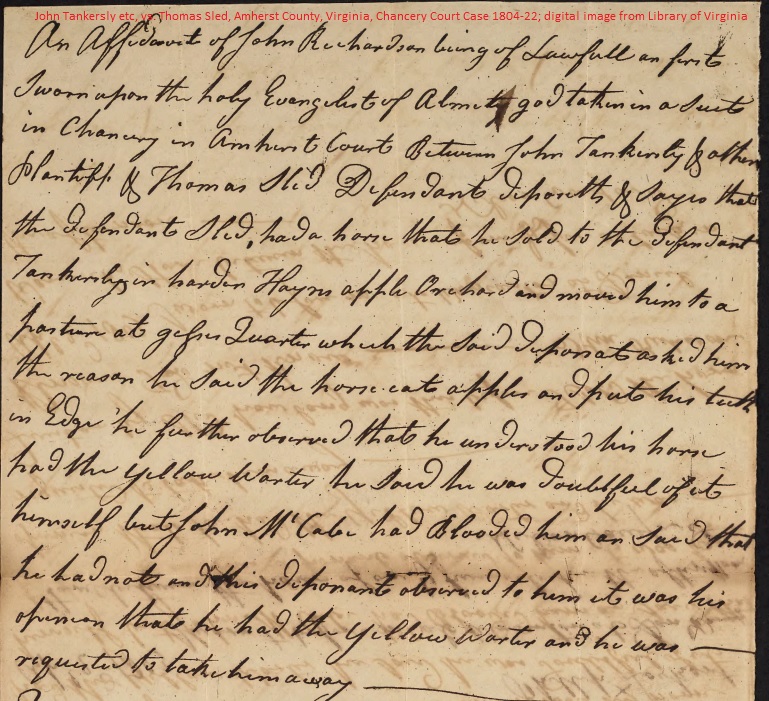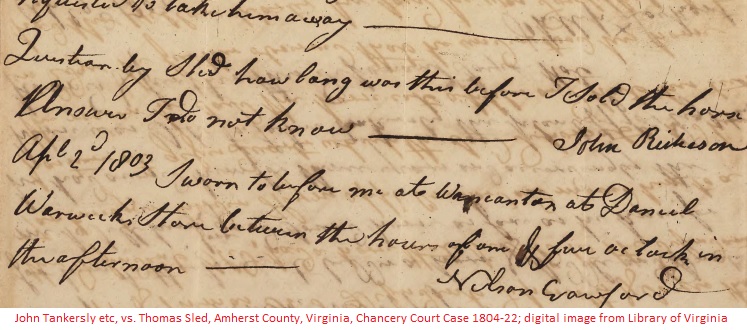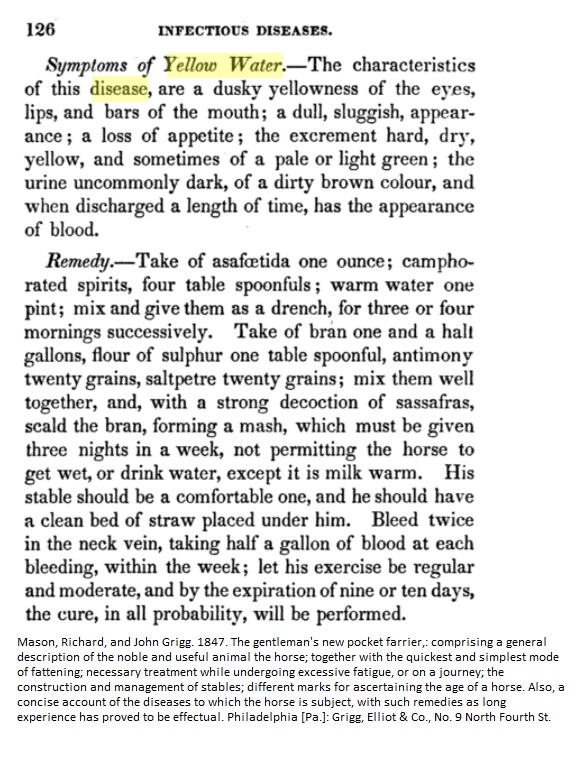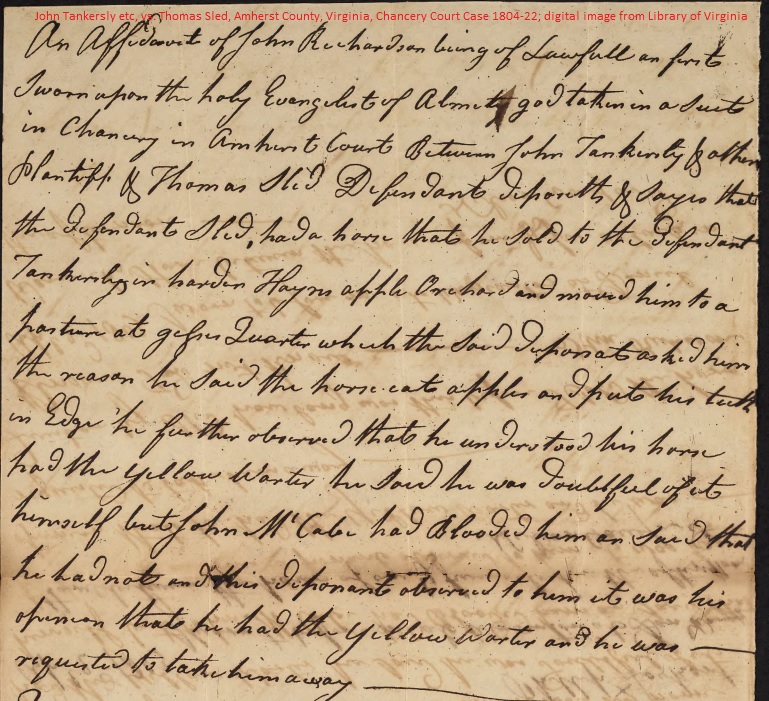The reference was in an 1803 affidavit made out in a court case regarding the death of horse in Amherst County, Virginia. The cause of the horse’s death was not really genealogically relevant in any way, but it was an item of interest. Learning more about the cause of death could help my understanding of the case (or maybe not) and potentially could help me to understand the testimony and transcribe it.
And whatever we can learn about the life and times of our ancestors can generally help our research.

John Richardson’s testimony concludes with the statement “it was his opinion that he had the Yellow Warter and he was requested to take him away.” Richardson discusses the horse and his care in more detail earlier in his statement. For now we’ll focus on the “Yellow Warter.”

A mid-19th century horse manual (located initially through Google Books) provided more information on yellow “warters.”

The disease was believed to be infectious. That likely explains why the horse was moved. The treatment mentioned in the affidavit appears to reference a bloodletting. That treatment is mentioned in the guide as well–going so far to suggest draining a half a gallon of blood each time the horse is bled.
Richard Mason suggests that the horse will be cured in nine or ten days. That apparently did not work in this case for the horse died.
The court case is not just about the horse. The purchaser apparently was sued for the amount due and then filed this suit because the horse died. There’s also affidavits from two brothers in regards to the horse and those affidavits suggest why looking at records of this type is important–aside from the occasional lesson about horse disease and treatment.


2 Responses
Poor horse– all that bleeding probably caused the death!
In reality it certainly didn’t help. A half gallon seems to be quite a bit.